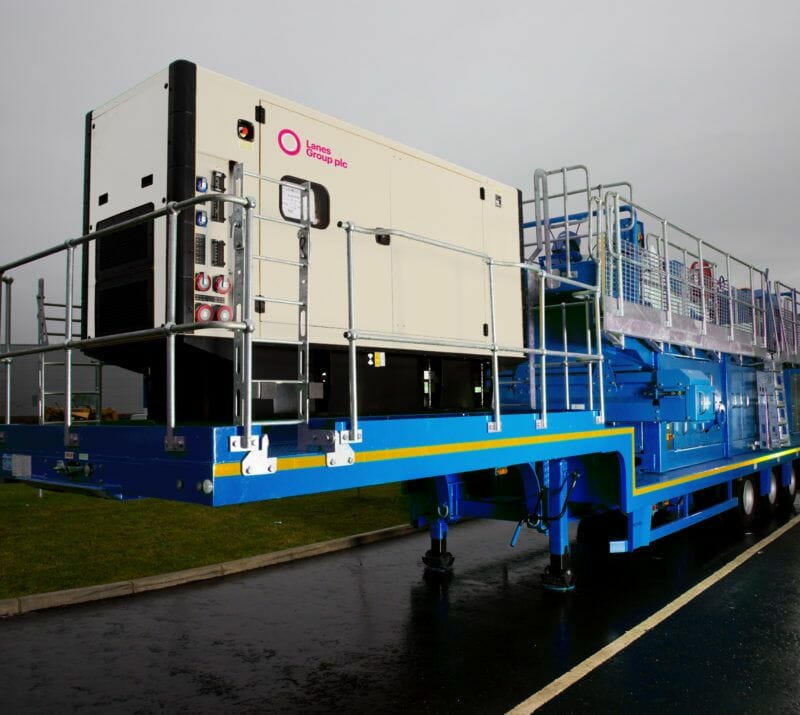Drainage and utilities specialist Lanes Group plc is offering industry-leading technology that supports faster and more effective cleaning of wastewater treatment systems and greatly reduces landfill costs.
It is investing in the CDEnviro D:MAX, a trailer-mounted material separation system, that can remove a variety of materials, including rag, plastic and grit, from large volumes of wastewater and sludge.
Lanes is already using the technology, developed and manufactured by CDEnviro in Northern Ireland, to support water treatment tank and digester cleaning for water utility clients.
As a mobile material separation and grading system, D:MAX can be used flexibly across a range of assets. It is also quick to set up and easy to operate.
Lanes Group Technical Director Andy Brierley said: “This is excellent UK-developed technology that will help us deliver vital wastewater asset maintenance benefits for our customers.
“It is a highly-sustainable way to support faster and more flexible tank cleaning. It will greatly reduce waste volumes going to landfill. It also has the potential to create new revenue streams from the separated waste.”
Lanes Utilities has already used a D:MAX to support tank cleaning at one of Thames Water’s largest water treatment works in Chertsey, Surrey. It acted as a secondary water treatment system while the tanks were taken off-line, avoiding disruption to wastewater processing.
Deploying D:MAX to separate solids from wastewater and sludge can also reduce wear and tear on water treatment centrifuges and pumps, reducing the risk of breakdowns and controlling maintenance costs.
The system has a sophisticated screening system that separates materials at different stages of the process. This results in 90% of water being removed from silt and grit and a minimum of 70% from rag, mostly made up of sanitary products and wipes, wrongly flushed down toilets.
It can be used to pre-treat sludge before it is sent for anaerobic digestion, reducing build-up of rag and grit in digester tanks, which reduces their effectiveness.
De-watered grit created by the D:MAX screening process is classified as low-risk waste so can be combined with other aggregate for us in agriculture or as backfill in groundworks.
D:MAX is expected to save Lanes utility and industrial cleaning customers significant landfill costs, at a time when there is a growing shortage of landfill sites, which is likely to push up costs still further.
Andy Brierley said: “Diverting waste from landfill is a key element of all our utility clients’ sustainability and cost-reduction strategies and is bound to be the focus of more Government regulatory control. Technologies like D:MAX are vital elements of a long-term solution to this problem.”
As well as water utilities, D:MAX can be deployed in many other sectors where renewal energy is generated by anaerobic digestion, including agriculture, waste recycling, and variety of process industries.








